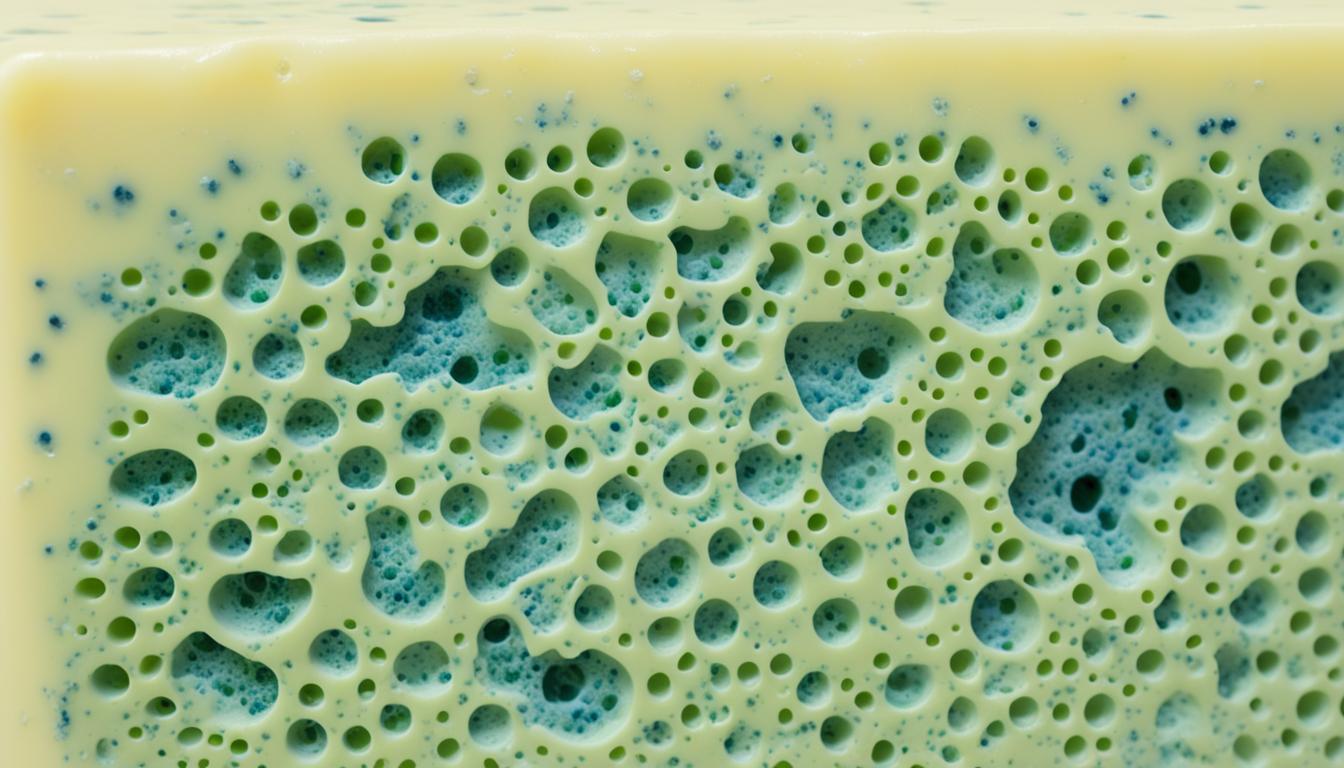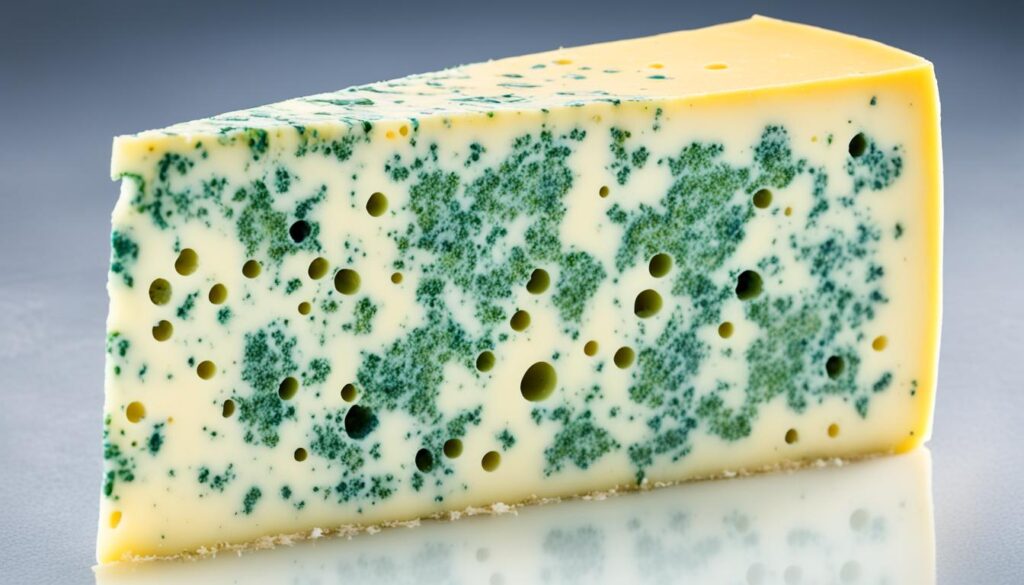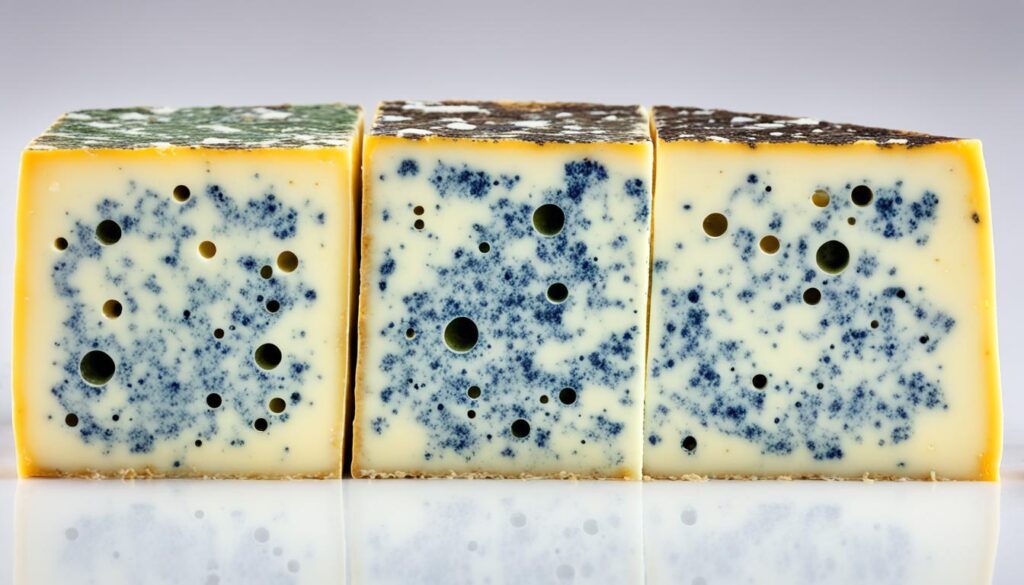
Innovative Techniques for is all cheese Mold
Welcome to our in-depth exploration of cheese mold and its role in cheese production. In this article, we will delve into the fascinating science behind cheese mold, debunk common myths, and discuss innovative techniques used in the industry. Whether you’re a cheese lover or simply curious about the art of cheesemaking, join us on this exciting journey.
Key Takeaways:
- Cheese production involves the intentional use of mold to enhance flavor and texture.
- Not all cheese is mold; there are mold-free varieties available.
- Mold plays a crucial role in cheese maturation, contributing to the development of distinct characteristics.
- Surface-ripened cheese may have visible mold on its rind, but it is safe for consumption.
- Innovative techniques are continuously being developed to control and optimize mold growth in cheesemaking.
Understanding Mold in Cheesemaking
Mold plays a significant role in the art of cheesemaking, contributing not only to the flavors but also to the textures of different types of cheese. Understanding the microbial role of mold in cheese production is key to crafting exceptional cheeses that delight the palate.
During the cheesemaking process, certain molds are intentionally added to the cheese milk or applied to the cheese surface, while others naturally occur in the cheese aging environments. These molds, typically from the Penicillium and Geotrichum genera, create unique biochemical transformations that result in distinctive characteristics.
The primary function of mold in cheesemaking is to break down proteins and fats, influencing the flavor profile of the cheese. This microbial action produces enzymes that break down complex compounds into simpler ones, releasing aromatic compounds that contribute to the cheese’s taste and aroma.
Mold also plays a crucial role in cheese maturation. As the cheese ages, the mold develops and spreads, forming a network of delicate threads throughout the cheese. This network enhances the texture of the cheese, creating a soft and creamy consistency in some varieties, and a crumbly or firm texture in others.
Furthermore, mold helps to create the characteristic rinds found on certain cheeses. As the cheese matures, mold growth occurs on the surface, forming distinctive rinds that protect and preserve the cheese. These rinds can range from delicate and bloomy, as seen in Brie and Camembert, to hard and natural, as observed in Parmesan and Gouda.
“Mold contributes complexity, depth of flavor, and textural nuances to the cheese. It is an essential element of the cheesemaking process, lending uniqueness to each cheese variety.”
It’s important to note that while mold is a vital part of many cheese varieties, not all cheese types contain visible mold. Some cheeses, such as fresh cheeses like Mozzarella or Ricotta, are made without the addition of mold and are consumed shortly after production, offering a clean, mild taste.
To further illustrate the significance of mold in cheesemaking, let’s take a closer look at some popular cheese varieties and the role mold plays in their development:
| Cheese Variety | Mold Type | Flavor Profile | Texture |
|---|---|---|---|
| Gorgonzola | Penicillium | Sharp, tangy, and creamy | Soft and crumbly |
| Camembert | Penicillium | Rich, earthy, and buttery | Soft and creamy |
| Roquefort | Penicillium | Intense, salty, and slightly sweet | Creamy and crumbly |
| Brie | Penicillium | Mild, creamy, and nutty | Soft and velvety |
| Gouda | No external mold | Rich, caramel-like, and nutty | Firm and smooth |

Debunking the Myth: Is All Cheese Mold?
Contrary to popular belief, not all cheese is mold. While mold plays a crucial role in the production and maturation of certain cheese varieties, there are also mold-free options available. Let’s explore the different types of cheese and shed light on the truth behind this misconception.
Mold-Free Cheese: Delighting Cheese Lovers without the Mold
There exist numerous cheese varieties that do not rely on mold for their creation. These cheeses are carefully crafted using traditional techniques and are never exposed to mold intentionally. They offer a fresh and mild flavor profile that is preferred by those who are not fond of the distinct taste and texture associated with surface-ripened cheeses.
- Feta
- Mozzarella
- Ricotta
- Paneer
- Queso fresco
These mold-free cheeses are popular ingredients in various cuisines and are widely enjoyed in salads, pizzas, and other culinary creations.
Surface-Ripened Cheese: The Mold-Rind Conundrum
Surface-ripened cheeses have garnered attention for their visually striking appearance, thanks to the molds that develop on their rind. However, it’s important to note that the mold on the rind of these cheeses is carefully cultivated and monitored to ensure safety and flavor enhancement. The visible molds belong to specific strains that are harmless and add complexity to the cheese’s taste profile.
Some examples of surface-ripened cheeses that exhibit mold on their rind include:
- Brie
- Camembert
- Munster
- Stilton
- Gorgonzola
These cheeses undergo controlled aging processes where the molds on their rind interact with the cheese, resulting in the desired flavors and textures appreciated by cheese connoisseurs worldwide.
Next, let’s explore the fascinating microbial role that mold plays in the cheesemaking process.

“The presence of mold in certain cheeses is a deliberate and carefully controlled process that contributes to the rich and diverse range of flavors found in the cheese world.” – Cheese expert Michael Smith
Conclusion
Throughout this article, we have delved into the fascinating world of cheese mold, exploring its role in cheesemaking and debunking the myth that all cheese is mold. We have learned that while mold does play a crucial role in the production and maturation of certain types of cheese, not all cheese is mold. In fact, there are various mold-free cheeses that are enjoyed by cheese enthusiasts around the world.
By understanding the microbial role of mold in cheesemaking, we can appreciate the diverse flavors and textures that it contributes to different types of cheese. From the bloomy rind of a Brie to the blue veins of a Roquefort, mold adds complexity and depth to these culinary delights. Furthermore, we have learned that surface-ripened cheeses may have visible mold on their rinds, but they are perfectly safe for consumption.
In conclusion, while it is true that mold is an integral part of many cheeses, it is not synonymous with all cheese. Whether you prefer mold-free cheeses or enjoy the unique characteristics of mold-ripened varieties, the world of cheese offers a wide range of options for every palate. So go ahead and savor the flavors, knowing that cheese mold adds its own distinctive touch to this beloved dairy product.




